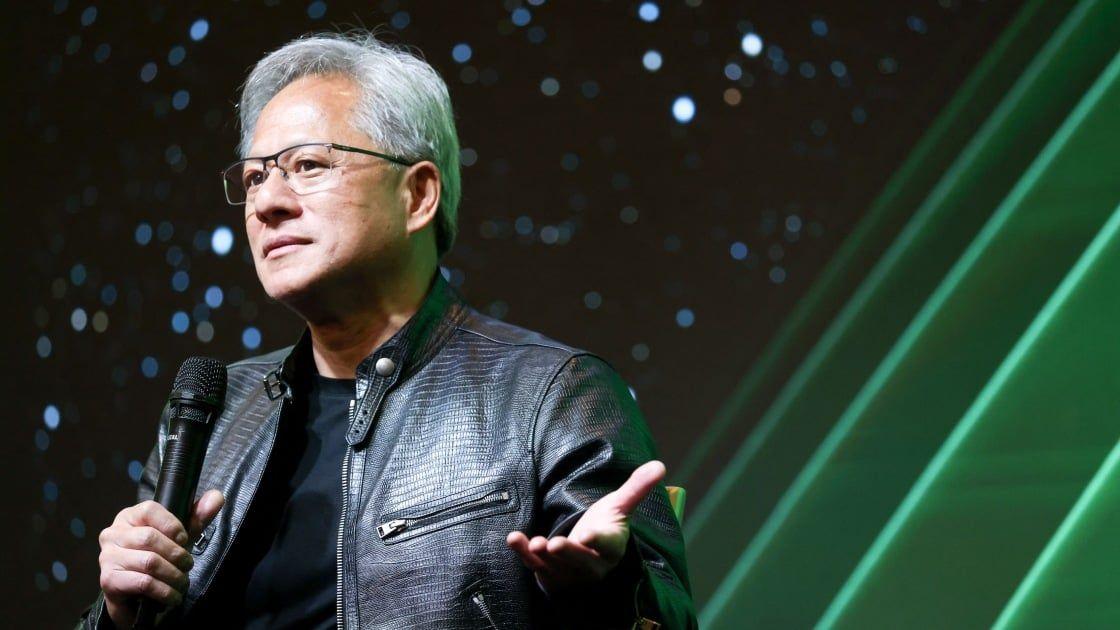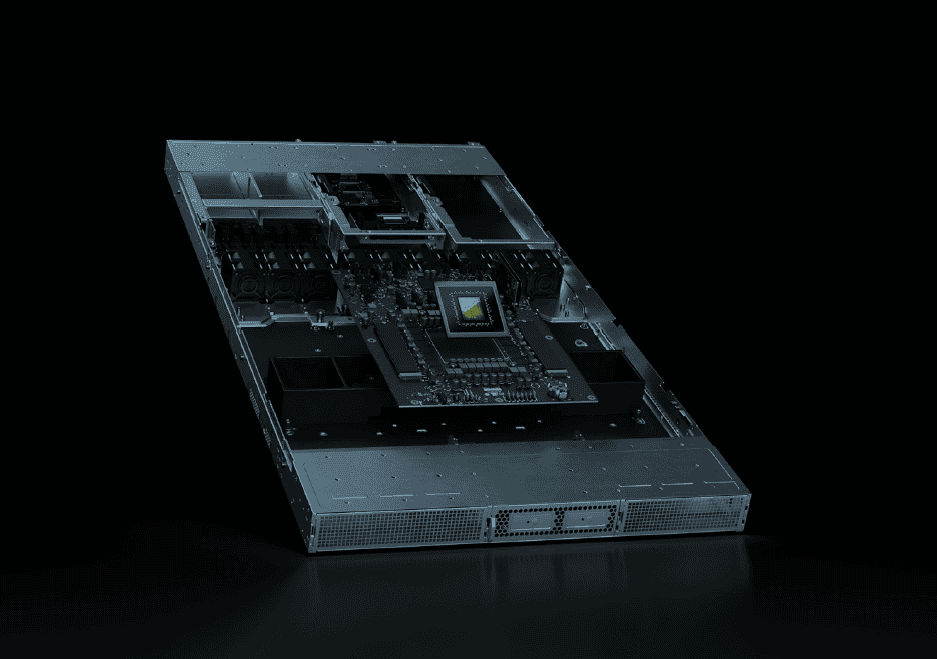Nvidia's NVLink Fusion: A Game-Changer in AI Chip Communication
3 Sources
3 Sources
[1]
Explainer: Why Jensen Huang's latest Nvidia play will reverberate across AI
Nvidia selling its chip-to-chip communication tech should help it solidify its stature at the front of the AI pile. Jensen Huang's keynote at COMPUTEX 2025, an ongoing event in Taipei which calls itself the world's largest AI exhibition, lasted an hour and 40 minutes. The 100 minutes were action packed with multiple announcements ranging from new generations of AI chips to partnerships for AI-first PCs to a new Taiwan HQ. But there was one that especially stood out. Huang said that Nvidia will be selling a tech that will speed up communication between chips
[2]
Nvidia plans to sell tech to speed AI chip communication
Nvidia CEO Jensen Huang made the announcement at the Taipei Music Center, site of the Computex AI exhibition, which runs from May 20 to 23. His keynote speech discussed Nvidia's history of building AI chips and systems and the software the company has built to support it. Huang remarked that at one point his presentations used to spend 90% of their time on the company's graphics chips, but that has changed.Nvidia said on Monday it plans to sell a technology to others that will tie chips together in order to speed up the chip-to-chip communication needed to build and deploy artificial intelligence tools. Nvidia launched a new version of its NVLink tech called NVLink Fusion on Monday that it will sell to other chip designers to help build powerful custom AI systems with multiple chips linked together. Marvell Technology and MediaTek plan to adopt the NVLink tech called Fusion for their custom chip efforts. Nvidia developed NVLink years ago, and it's used to exchange massive amounts of data between various chips, such as in the company's GB200, which combines two Blackwell graphics processing units with a Grace processor. Nvidia CEO Jensen Huang made the announcement at the Taipei Music Center, site of the Computex AI exhibition, which runs from May 20 to 23. His keynote speech discussed Nvidia's history of building AI chips and systems and the software the company has built to support it. Huang remarked that at one point his presentations used to spend 90% of their time on the company's graphics chips, but that has changed. Now, Nvidia has grown beyond its roots as a video game graphics chip maker into the dominant producer of chips that have powered the AI frenzy that has gripped the tech industry since ChatGPT's launch in 2022. Nvidia has been designing CPUs that would run Microsoft's Windows operating system and use technology from Arm Holdings, Reuters has previously reported. At Computex last year, Huang sparked "Jensanity" in Taiwan, as the public and media breathlessly followed the CEO, who was mobbed by attendees at the trade show. During the company's annual developer conference in March, Huang outlined how Nvidia would position itself to address the shift in computing needs from building large AI models to running applications based on them. He unveiled several new generations of AI chips, including the Blackwell Ultra, which will be available later this year. The company's Rubin chips will be followed by Feynman processors, which are set to arrive in 2028. Nvidia also launched a desktop version of its AI chips, called DGX Spark, targeting AI researchers. On Monday, Huang said the computer was in full production and would be ready in a "few weeks". Computex, expected to have 1,400 exhibitors, will be the first major gathering of computer and chip executives in Asia since U.S. President Donald Trump threatened to impose sweeping tariffs to push companies to increase production in the US.
[3]
Nvidia plans to sell tech to speed AI chip communication
TAIPEI (Reuters) -Nvidia said on Monday it plans to sell a technology to others that will tie chips together in order to speed up the chip-to-chip communication needed to build and deploy artificial intelligence tools. Nvidia launched a new version of its NVLink tech called NVLink Fusion on Monday that it will sell to other chip designers to help build powerful custom AI systems with multiple chips linked together. Marvell Technology and MediaTek plan to adopt the NVLink tech called Fusion for their custom chip efforts. Nvidia developed NVLink years ago, and it's used to exchange massive amounts of data between various chips, such as in the company's GB200, which combines two Blackwell graphics processing units with a Grace processor. Nvidia CEO Jensen Huang made the announcement at the Taipei Music Center, site of the Computex AI exhibition, which runs from May 20 to 23. His keynote speech discussed Nvidia's history of building AI chips and systems and the software the company has built to support it. Huang remarked that at one point his presentations used to spend 90% of their time on the company's graphics chips, but that has changed. Now, Nvidia has grown beyond its roots as a video game graphics chip maker into the dominant producer of chips that have powered the AI frenzy that has gripped the tech industry since ChatGPT's launch in 2022. Nvidia has been designing CPUs that would run Microsoft's Windows operating system and use technology from Arm Holdings, Reuters has previously reported. At Computex last year, Huang sparked "Jensanity" in Taiwan, as the public and media breathlessly followed the CEO, who was mobbed by attendees at the trade show. During the company's annual developer conference in March, Huang outlined how Nvidia would position itself to address the shift in computing needs from building large AI models to running applications based on them. He unveiled several new generations of AI chips, including the Blackwell Ultra, which will be available later this year. The company's Rubin chips will be followed by Feynman processors, which are set to arrive in 2028. Nvidia also launched a desktop version of its AI chips, called DGX Spark, targeting AI researchers. On Monday, Huang said the computer was in full production and would be ready in a "few weeks". Computex, expected to have 1,400 exhibitors, will be the first major gathering of computer and chip executives in Asia since U.S. President Donald Trump threatened to impose sweeping tariffs to push companies to increase production in the U.S. (Reporting by Max A. Cherney and Wen-Yee Lee in Taipei; Editing by Jacqueline Wong and Sonali Paul)
Share
Share
Copy Link
Nvidia announces plans to sell its NVLink Fusion technology, designed to speed up communication between AI chips, potentially revolutionizing the AI industry.

Nvidia's Strategic Move in AI Chip Communication
In a significant announcement at COMPUTEX 2025, Nvidia CEO Jensen Huang revealed the company's plans to sell its chip-to-chip communication technology, NVLink Fusion, to other manufacturers. This move is set to accelerate the development and deployment of artificial intelligence tools across the industry
1
.NVLink Fusion: Enhancing AI System Performance
NVLink, Nvidia's proprietary interconnect technology, has been a crucial component in the company's AI systems for years. The latest iteration, NVLink Fusion, is designed to facilitate rapid data exchange between various chips, such as in Nvidia's GB200 system, which combines two Blackwell GPUs with a Grace processor
2
.By offering this technology to other chip designers, Nvidia aims to enable the creation of powerful custom AI systems with multiple interconnected chips. Industry leaders Marvell Technology and MediaTek have already announced plans to adopt NVLink Fusion for their custom chip efforts
3
.Nvidia's Evolving Focus and Future Roadmap
Huang's keynote at COMPUTEX 2025 highlighted Nvidia's transformation from a video game graphics chip maker to the dominant producer of chips powering the AI industry. This shift has been particularly notable since the launch of ChatGPT in 2022, which sparked an AI frenzy across the tech sector
2
.The CEO also outlined Nvidia's roadmap for future AI chip generations:
- The Blackwell Ultra, set for release later this year
- The Rubin chips, currently in development
- The Feynman processors, scheduled for 2028
2
Related Stories
DGX Spark: Bringing AI to the Desktop
In addition to NVLink Fusion, Huang announced the full production of DGX Spark, a desktop version of Nvidia's AI chips targeting AI researchers. This powerful computer is expected to be available within a few weeks, further expanding Nvidia's reach in the AI research community
2
.Implications for the AI Industry
Nvidia's decision to sell its chip-to-chip communication technology marks a strategic move to solidify its position at the forefront of the AI industry. By enabling other manufacturers to create more efficient AI systems, Nvidia is not only expanding its influence but also potentially accelerating the overall pace of AI development
1
.This announcement comes at a crucial time, as COMPUTEX 2025 serves as the first major gathering of computer and chip executives in Asia since recent geopolitical tensions surrounding chip production. With 1,400 exhibitors expected, the event underscores the growing importance of AI and chip technology in the global tech landscape
3
.As Nvidia continues to push the boundaries of AI chip technology, its latest moves suggest a future where AI systems become increasingly powerful, efficient, and ubiquitous across various industries and applications.
References
Summarized by
Navi
[3]
Related Stories
Nvidia CEO Jensen Huang Unveils New AI Technologies at Computex 2025
15 May 2025•Technology

NVIDIA Unveils NVLink Fusion: Enabling Custom AI Infrastructure with Industry Partners
19 May 2025•Technology

Nvidia CEO Jensen Huang Emphasizes Global Cooperation in AI Amid Potential Trump Administration Restrictions
23 Nov 2024•Technology

Recent Highlights
1
Google launches Gemini 3 Flash as default AI model, delivering speed with Pro-grade reasoning
Technology

2
OpenAI launches GPT Image 1.5 as AI image generator war with Google intensifies
Technology

3
OpenAI launches ChatGPT app store, opening doors for third-party developers to build AI-powered apps
Technology





